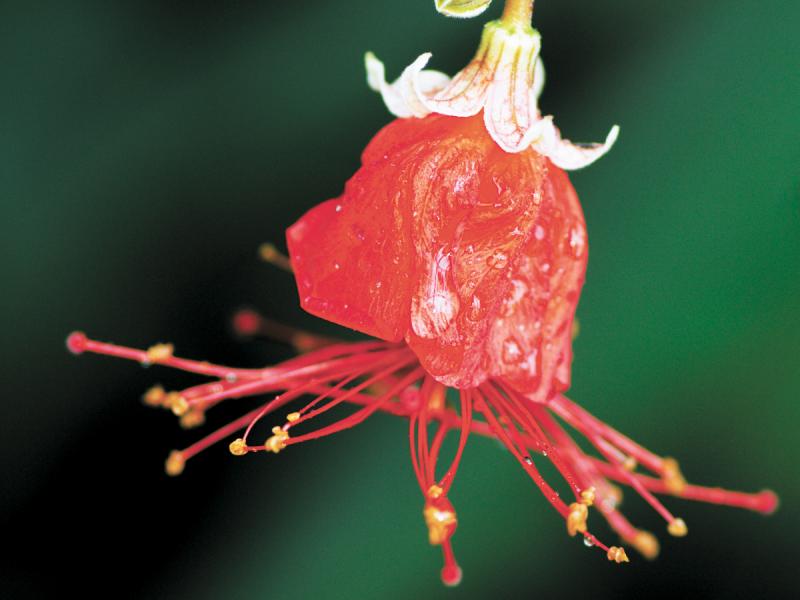Propagate your Red Chinese Lantern Hibiscus from cuttings
Life is full of silent signals. Bright red Chinese lanterns glowing from within like tiny volcanoes send us a signal of tranquility mixed with fun. Those Chinese lanterns once served a more sinister purpose.
Chinese military strategist Zhuge Liang (181-234 CE) used these glowing sky lanterns once when surrounded by the enemy. He was rescued after sending a call for help written on a sky lantern.
No need to call in the troops via sky lantern when you can rescue a dreary house with brilliant Red Chinese Lantern Hibiscus (Hibiscus grandidieri). Small, striking red flowers that look for all the world like Chinese lanterns hang from the tips of drooping branches.
This is a native of Africa, with a low-growing habit that eventually forms a slight mound of foliage and flowers. Growing just two to four feet tall, its small size and compact growth make this an ideal potted houseplant. The Red Chinese Lantern Hibiscus makes an interesting bonsai, and is very popular because it is relatively easy to keep blooming indoors.
Choose a sunny windowsill or locate under grow lights where it will bloom year-round. Try to keep winter temperatures above 65°F. Only water Red Chinese Lantern Hibiscus when the soil feels dry. Do not let the plant get so dry that it wilts, as wilting can permanently injure the plant.
Blooming year-round takes a lot of nutrients, so you will have to feed it with a balanced fertilizer. Choose a fertilizer made especially for blooming houseplants with a higher proportion of phosphorus. Phosphorus helps set flower buds, among other benefits. In order to absorb phosphorus, your potting soil should have a soil pH of 6.5 to 6.8. Mixing in organic matter such as compost will also increase the availability of phosphorus.
You can propagate your Red Chinese Lantern Hibiscus from cuttings. Each cutting will grow into an exact copy of the parent plant. Each cutting should be made from new growth or softwood. Softwood means you can bend the branch without snapping it. It is usually found when the plants are actively growing in spring or early summer.
Remove all but the top set of leaves and trim the bottom of the cutting so it is just below a leaf node, which is a small bump on the cutting. Dip the cuttings in rooting hormone and shake off any excess. Thoroughly wet a mix of potting soil and perlite. Poke holes with a pencil and place the cuttings in the holes, tamping them down firmly.
To retain humidity, put a plastic bag loosely over the cutting, being careful that the plastic does not touch the leaves. Keep the cuttings in partial shade, keeping the soil damp, not soggy, and you will have rooted cuttings of your Red Chinese Lantern Hibiscus within eight weeks.
Time to put up real red Chinese lanterns and have a party. Or send a message for help. Sometimes it’s the same thing.




















































